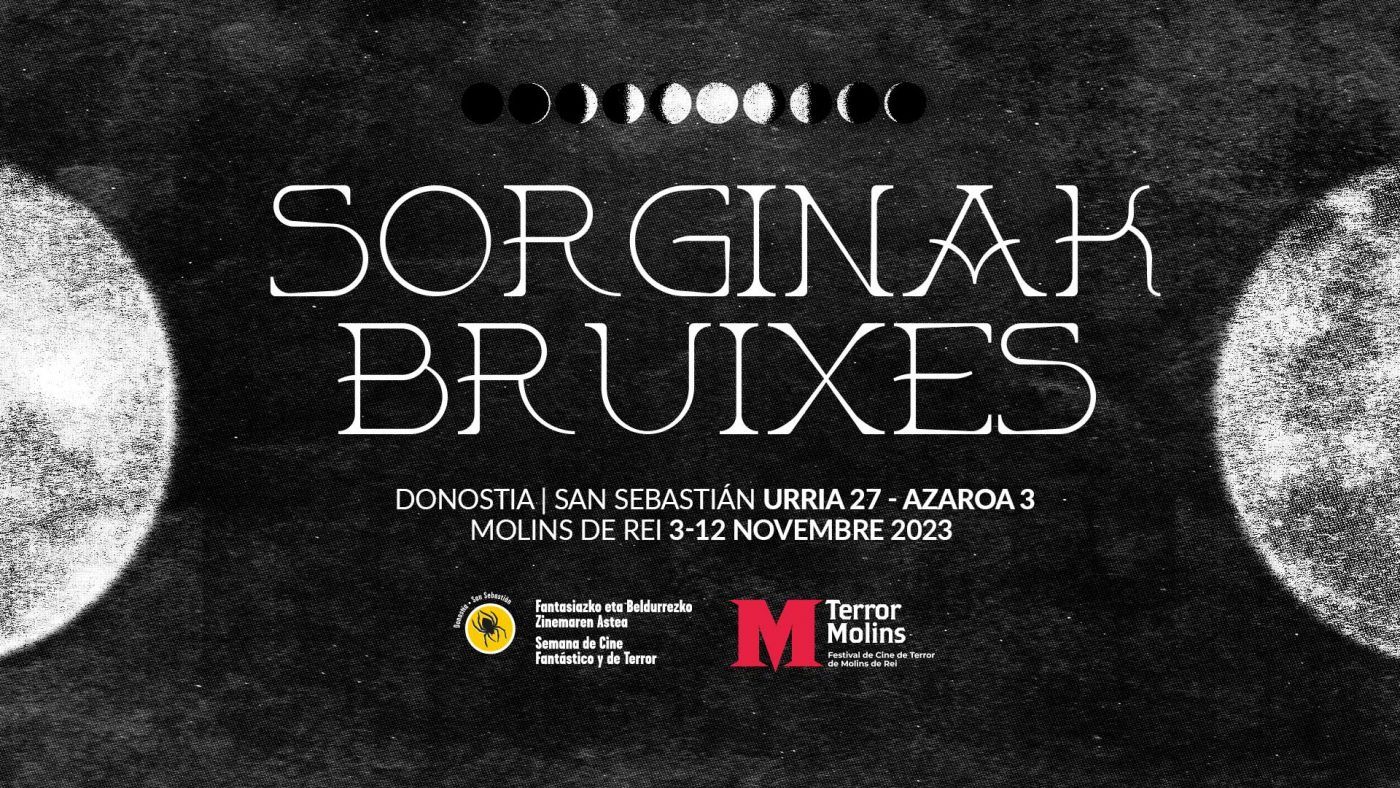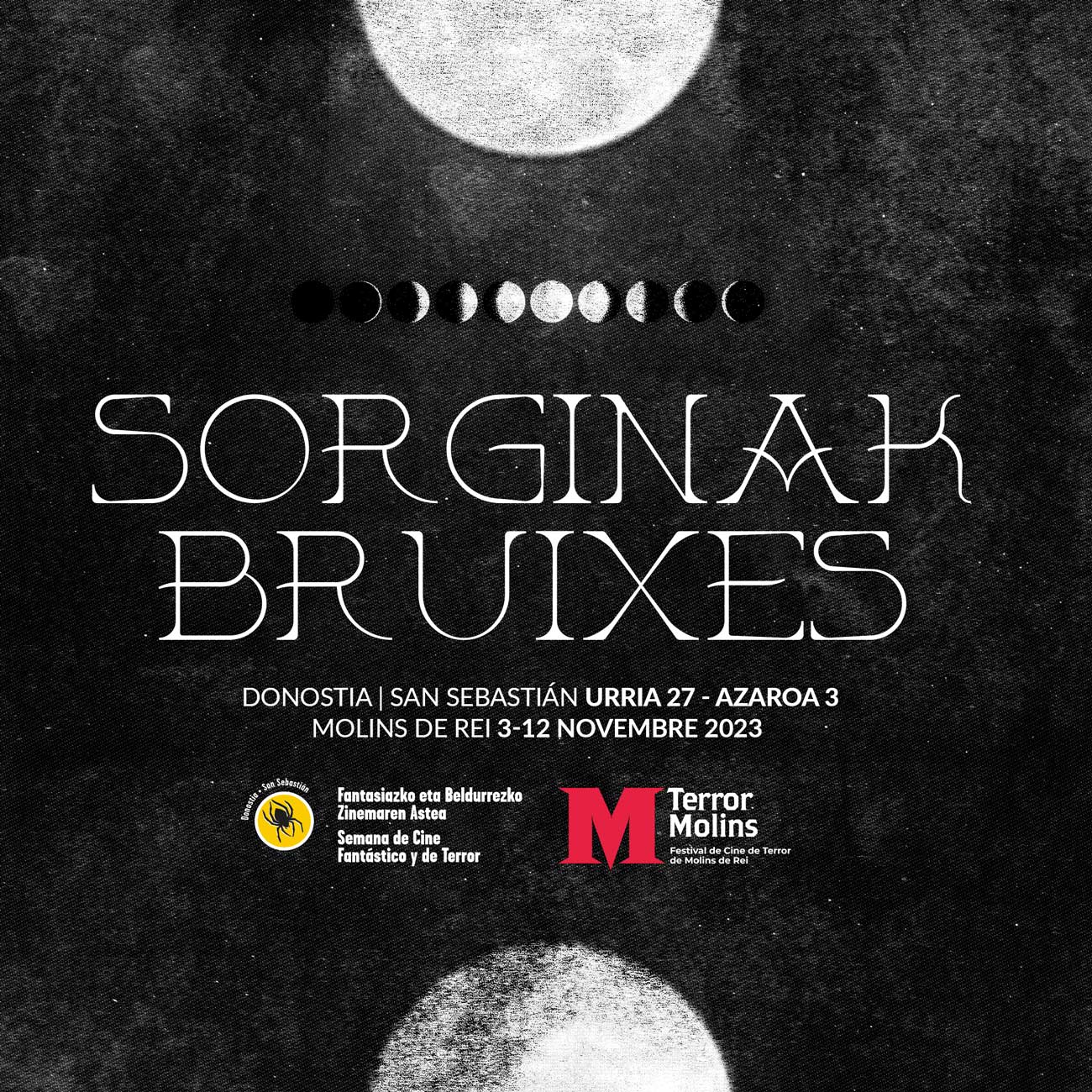An exhibition featuring 24 women illustrators and a book penned by Elisa McCausland and Diego Salgado feature in the combined leitmotif
The Donostia / San Sebastian Horror and Fantasy Film Festival and the Molins de Rei Horror Film Festival join forces this year to present a series of combined activities focused on the world of witches, the protagonists of their respective 2023 editions, to run in October and November. The title given to the leitmotif is SORGINAK-BRUIXES. The title given to the leitmotif is SORGINAK-BRUIXES. .
While witches have served as a source of inspiration for horror movies since the outset, they have taken on particular importance in the context of the Basque Country and Catalunya, where cinema and literature have explored history, culture and identity precisely from that angle.
Witches of all sorts continue to fascinate and terrify horror movie audiences. However, their meaning has been given new significance in recent years, becoming a symbol of women’s empowerment and resistance to patriarchal and religious oppression: The Lords of Salem (2012), The Love Witch (2016), Akelarre (2020).The Lords of Salem (2012), The Love Witch (2016), Akelarre (2020)–.
Basque witches are known as sorgin or sorguiña, which could translate into “maker of luck” or “creator”. Catalan witches used the term bruixa, coming from the Latin bruxa or brutia (“biter” or “sucker”). Both have left profound marks on traditional culture in the shape of legends, places and celebrations. The Basque Country is home to the Zugarramurdi Cave or Sorginen Leizea, the setting of witches’ covens. In Catalunya we find the Montsoriu Castle, Sant Feliu de Sasserra, and the Plaça de les Bruixes in Molins de Rei, where witches are once said to have lived or gathered.
The Horror and Fantasy Film Festival and TerrorMolins embrace this common cultural heritage and celebrate it with an exhibition of women illustrators and a jointly written official book, as well as other activities to be announced at a future date. The respective events will run from 27 October to 3 November in San Sebastian, and from 3-12 November in Molins de Rei.
Exhibition:
Bruixes – Sorginak – Witches Illustrated Witches’ Sabbath
Curator: Borja Crespo
The exhibition Bruixes – Sorginak – Witches. Illustrated Witches’ Sabbath, curated by Borja Crespo, unites 24 witches with backgrounds linked to comics, design and illustration, brought together in homage to an essential representation in the literary and audiovisual fiction that inhabits our dreams and nightmares.
This ritual show boasts the important presence of women Basque (Ane Pikaza, Raquel Alzate, Higinia Garay, Josune Urrutia) and Catalan authors (Genie Espinosa, Sandra Uve, Susanna Martin, Nadia Hafid). We have invoked this selection of artists to pay tribute, with the magic of their talent, to the importance and appeal of a symbol occupying centre stage in fables and found in some of our history’s most hair-raising periods.
The exhibition can be visited during both festivals. During both festivals, in San Sebastian the exhibition can be visited at the Sala San Jerónimo (Municipal Library Activities Hall) and in Molins de Rei at the Sala Ca n’Ametller.
The full list of participating illustrators is: Raquel Alzate, Sara Bea, Carla Berrocal, Natacha Bustos, Olga de Castro, Genie Espinosa, Mabel Esteban, Ana Galvañ, Higinia Garay, Nadia Hafid, Irene Márquez, Susanna Martín, Mermelada de Sesos, Ana Oncina, Laura Pérez, Mireia Pérez, Miriampersand, Ane Pikaza, Sara Soler, Clara Soriano, Josune Urrutia, Sandra Uve, Teresa Valero y Roberta Vázquez.
Official book
Beso negro Brujería, cine y cultura pop
Elisa McCausland and Diego Salgado
As all lovers of the forbidden arts are well aware, the osculum infame or kissing the Devil’s anus, his other mouth, seals the submission of a human being to the charms of evil. Beso negro: Brujería, cine y cultura pop (Black kiss: Witchcraft, cinema and pop culture) includes that image in its title to shed dark light on a phenomenon that has continued to feature one way or another in traditional culture since the very beginnings of the Age of Reason: witchcraft.
Following an introduction that takes a look back over the impact of the phenomenon on the cultural and artistic sphere of the last two centuries as an expression of the underlying discontent with the values of Modernity, the essay sets about comparing, in two clearly defined sections, the figures of the warlock and the witch, ubiquitous in audiovisual fiction. The warlock and the witch are complementary yet antagonistic figures, if we heed the means and ends they strive to achieve when subverting the prevailing values.
Beso negro Brujería, cine y cultura pop analyses the strategies of both to change reality in a show which, although focused on the cinema, still has time for the small screen, the comic and other artistic and audiovisual expressions where both warlock and witch have struggled to bring about another way of being and existing in the world. From Dion Fortune (1890-1946) and Häxan: Witchcraft Through the Ages (1922) to The Witch (2015) and the TikTok necromancers, this is a journey where everything seems to have been said and where everything is yet to be invoked.
The book will be published by Hermenaute.
Authors: Elisa McCausland and Diego Salgado
Elisa McCausland, journalist, critic and researcher, and Diego Salgado, film critic and cultural promotor, have been reflecting for more than fifteen years on the meanings, contexts and potential of traditional culture and its expressions, with particular emphasis on the cinema and comics. Today they share a microphone on Trincheras de la Cultura Pop, joining hands to write audiovisual critiques and studies in the specialised publications Dirigido Por, Rockdelux, SoFilm and Solaris. The two are promoters and collaborators of the ECC-UAH Chair on Comic Research and Culture and have written the essays Supernovas: Una historia feminista de la ciencia ficción audiovisual (errata naturae, 2019) and Sueños y fábulas: Historia de Vertigo (ECC, 2022). Solo, Elisa is also the author of Wonder Woman: El feminismo como superpoder (2019).


